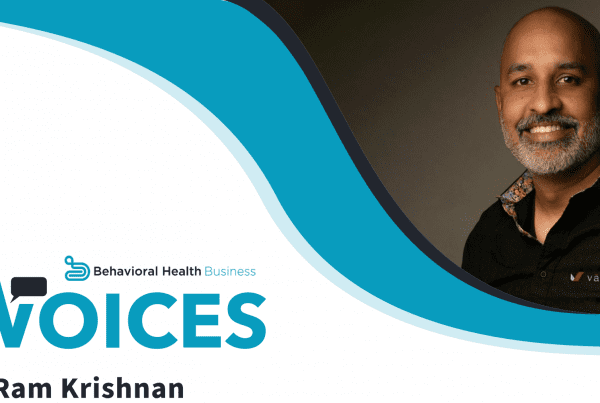A Friendly Guide for Providers Navigating the World of Insurance, Documentation, and Better Patient Care
Introduction
If you’re working in behavioral health—especially in Intensive Outpatient Programs (IOP) or Partial Hospitalization Programs (PHP)—you’ve probably heard the term “Utilization Review” (UR) more times than you can count. But what does it really mean, and why does it matter so much? In simple terms, UR is the process insurance companies and managed care organizations use to decide whether the care you’re providing is necessary, appropriate, and efficient. When care gets more intensive, like in IOPs and PHPs, payers pay closer attention, and UR becomes a key part of the process. With insurance denials on the rise and demand for behavioral health services growing, getting UR right isn’t just about paperwork—it’s about making sure your patients get the care they need, and your program stays afloat.
1. What Is Utilization Review in IOP/PHP?
So, what’s UR all about? In IOPs and PHPs, payers use UR to check whether the treatment you’re providing is necessary and meets their standards. There are three main types of reviews you’ll encounter along your patient’s journey:
- Prospective Review: Happens before treatment starts—think of it as the green light for your care plan and intake process.
- Concurrent Review: Takes place while treatment is happening. It’s about checking in on the patient’s progress and making sure the plan is still right for them.
- Retrospective Review: After treatment ends, payers look back to see if everything was appropriate and billing is in order.
For prospective reviews, it pays to be prepared. Having clear billing codes, solid care plans, and thorough, evidence-based documentation can make the approval process go much smoother. UR works best when everyone—providers, patients, payers—collaborates to meet each individual’s needs. A good start with UR sets the stage for effective care and keeps everyone on the same page about what success looks like.
During treatment, concurrent reviews keep things moving. You’ll need to regularly document patient progress, changes in treatment, and discharge planning. Comparing progress to your original goals and measurement outcomes helps show whether care should continue, change, or wrap up. Clear, ongoing documentation isn’t just good practice—it’s the key to making sure payers keep supporting your work.
Retrospective reviews are a final check. This is when payers evaluate how things went, spot successes and areas for improvement, and sort out any last billing details. Strong documentation is crucial here, too—it’s your defense against denied payments.
2. Why UR Matters More for IOP/PHP
UR is especially important for IOP and PHP programs because the stakes are higher—patients often have complex needs and require more intensive, costly care than standard outpatient therapy. That means payers want to see solid justification for every day a patient spends in your program, resulting in more frequent reviews and a bigger paperwork load for providers.
The documentation demands are real. You’ll need detailed clinical notes that capture progress, individualized treatment plans, and ongoing proof that your interventions are working. Every piece of care, from admission to discharge, has to be clearly documented and able to stand up to scrutiny. If you miss the mark, you risk denied days (no payment for certain periods) or even patients being discharged before they’re ready.
Financially, denied days and early discharges can hit hard. Lost revenue threatens your program’s sustainability and interrupts care for those who need it most. That’s why robust UR processes are so important—they help you stay compliant, support great clinical outcomes, and keep your organization healthy. By focusing on accurate, timely, evidence-based documentation, you can advocate for your patients and minimize the administrative headaches.
3. The Challenges Providers Face
Providers know UR can be tough. Tight timelines for submitting reviews mean you’re always racing to gather documentation, and there’s little room for mistakes. Insurance requirements change often, and payers expect quick responses to their requests, making it a challenge to stay current.
Plus, different payers—commercial insurance versus Medicaid, for example—have their own rules about what’s medically necessary and how to document it. You’ll need to learn and adapt to multiple sets of standards, which adds to the administrative complexity.
Pulling together input from a whole team—therapists, psychiatrists, nurses—makes things even trickier. Everyone documents differently, and coordinating those perspectives into one clear, unified case for continued care is no small feat.
If your UR process isn’t streamlined, staff can end up burned out and overwhelmed. Inefficient workflows mean wasted effort, miscommunication, and delays. This doesn’t just frustrate your team—it can impact patient care. Investing in better systems and training can make all the difference.
4. Best Practices to Stay Ahead of UR Requirements
Ready to tackle UR head-on? Here are some practical tips:
- Standardize your documentation templates so it’s easy to show medical necessity. Uniform templates help you capture everything you need—problems, interventions, patient responses, progress toward goals—every time. Update them regularly to keep pace with payer changes.
- Integrate UR workflows with intake, census management, and treatment planning. Link UR checkpoints to key patient milestones so your team knows when reviews are coming up, and you’re not scrambling at the last minute.
- Use data-driven outcomes like validated scales (think PHQ-9, GAD-7, C-SSRS) to back up your case for continued care. Objective metrics help justify medical necessity and guide clinical decisions.
- Maintain a UR calendar with reminders for concurrent reviews. A centralized digital calendar with alerts keeps everyone on track and avoids missed deadlines.
- Train your staff regularly on payer requirements and common documentation pitfalls. Ongoing education and feedback from past denials help everyone stay sharp and compliant.
By investing in these strategies, you can reduce administrative burden, minimize denials, and improve both patient outcomes and organizational sustainability.
5. Leveraging Technology to Simplify UR
Electronic Health Records (EHRs) built for behavioral health can be game-changers. These systems make it easier to create audit-ready clinical notes and offer centralized census and scheduling tools tied to UR deadlines.
Specialized EHRs let you use configurable templates, so clinicians capture all the right info—presenting problems, interventions, responses, and progress—every time. That means less chance of missing something important and facing claim denials.
Centralized census and scheduling features help your team track patient progress and flag when reviews, reauthorizations, or discharge summaries are due. Automated reminders keep everyone ahead of deadlines and reduce last-minute stress.
Integrations with billing and authorization systems bring everything together in one workflow, cutting down on manual data entry and reducing errors. This helps keep authorizations up to date, billing codes accurate, and documentation supporting ongoing care—so you can avoid denials and improve your revenue cycle.
Advanced reporting dashboards give leadership and payer partners real-time insights into how things are going—completion rates, denial trends, and productivity. For payers, access to transparent, objective outcome data builds trust and leads to smoother authorizations and faster reimbursements. The right technology doesn’t just make UR easier—it helps you deliver better care and run your organization more efficiently.
6. Staying Ahead = Better Care + Financial Sustainability
Being proactive with UR means patients stay in care as long as they need it, leading to better outcomes. Regularly monitoring progress with objective tools helps you stick to payer guidelines for documentation and review timelines. When you can provide clear evidence of medical necessity, it’s easier to justify continued treatment and avoid premature discharge.
A well-managed UR process protects your revenue by reducing denied claims and helps build better relationships with payers through compliance and transparency. Consistently meeting requirements and submitting thorough, timely documentation shows you’re committed to quality and operational excellence. That minimizes financial risks and encourages payers to authorize ongoing services. Ultimately, a strong UR strategy supports both clinical and financial sustainability, making sure patients get the care they need and your organization thrives.
Conclusion
To sum it up, Utilization Review isn’t just another hoop to jump through—it’s essential for the success of IOP and PHP programs. Good UR means your patients get the right care for the right amount of time, you minimize claim denials, and your organization stays strong. Staying ahead means having standardized procedures, training staff to handle payer requirements confidently, and using technology to automate and streamline your workflows. Behavioral health EHRs help you with this in a myriad of ways, including the ability to create audit-ready notes, set reminders for key deadlines, and keep billing and authorization systems connected. When all these elements work together, you boost compliance, build trust with payers, and ensure smoother authorizations and timely reimbursement.
If you’re looking to optimize UR in your IOP/PHP program, check out how Valant’s specialized solutions can help you deliver better patient care, improve efficiency, and achieve long-term financial success.
How much does your EHR really cost?
Don’t just consider the upfront cost of an EHR. Understand the true value.
Many EHRs fail to meet the unique needs of behavioral health practices, costing you time and money in the long run. Learn how your EHR should optimize your practice and maximize your return on investment.









